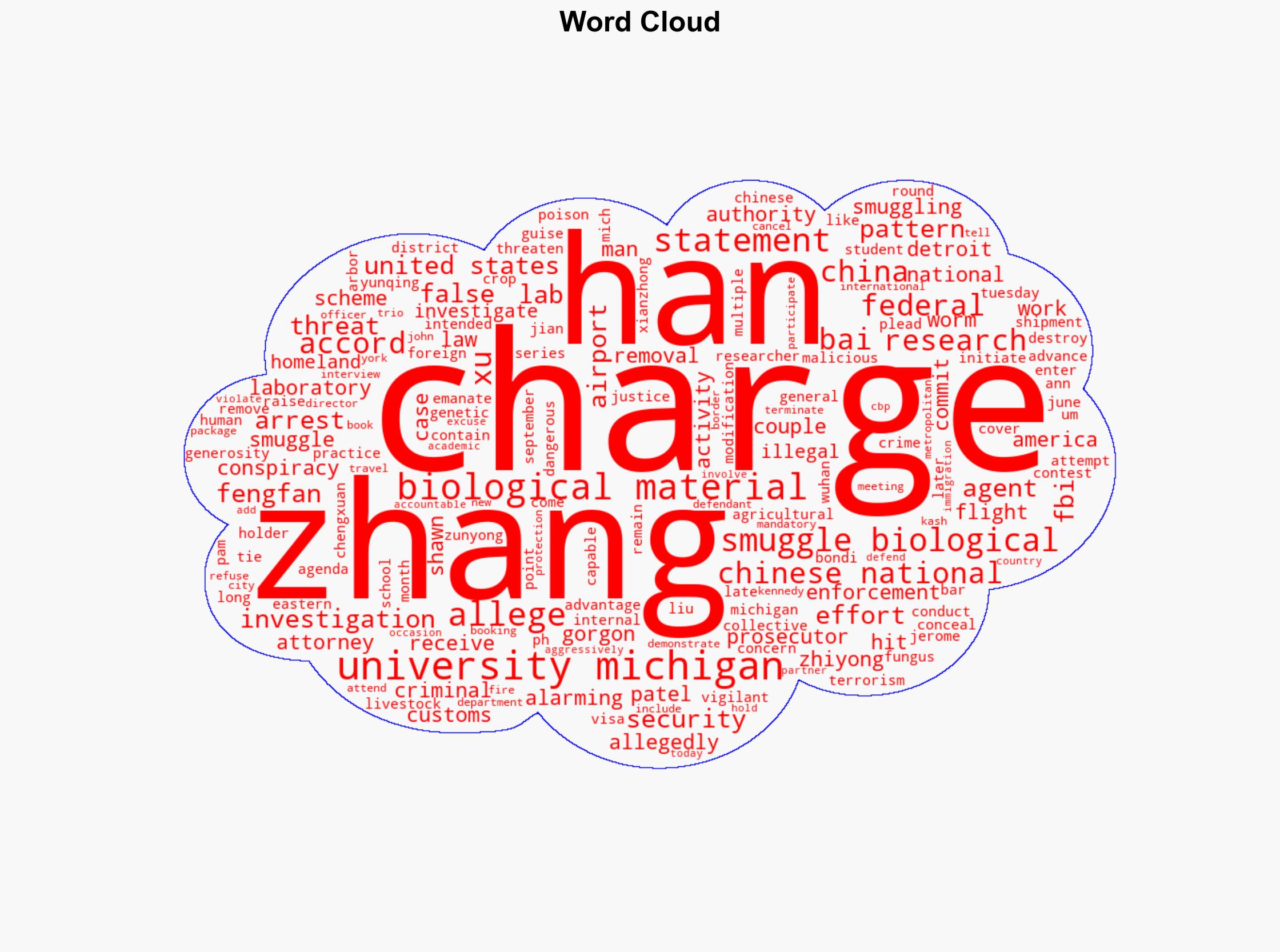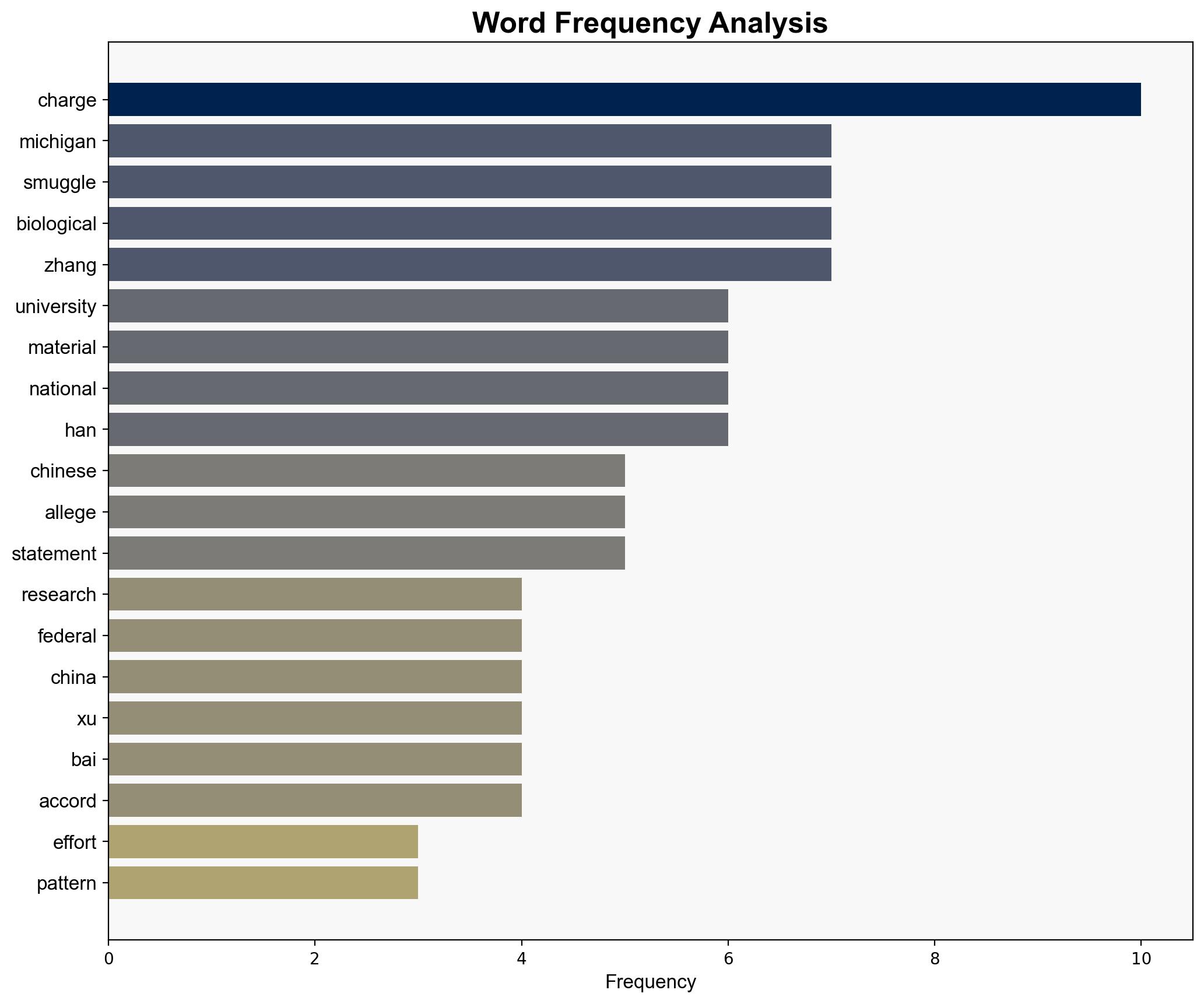3 more Chinese researchers at University of Michigan charged over alleged effort to smuggle biological materials Alarming pattern – New York Post
Published on: 2025-11-06
Intelligence Report: 3 more Chinese researchers at University of Michigan charged over alleged effort to smuggle biological materials Alarming pattern – New York Post
1. BLUF (Bottom Line Up Front)
The most supported hypothesis suggests a coordinated effort by individuals to smuggle biological materials from the United States to China, potentially for purposes that could threaten U.S. national security. This assessment is made with a moderate confidence level due to the pattern of similar incidents and the involvement of multiple individuals. Recommended action includes enhancing security protocols at research institutions and increasing scrutiny of foreign researchers involved in sensitive research areas.
2. Competing Hypotheses
1. **Coordinated Smuggling Operation**: The actions of the researchers are part of a deliberate and coordinated effort to smuggle biological materials to China, possibly for military or economic advantage.
2. **Isolated Incidents of Misconduct**: The incidents are isolated acts of individual misconduct without broader strategic intent, driven by personal or financial motives rather than state-sponsored activities.
Using ACH 2.0, the first hypothesis is better supported due to the repeated pattern of similar incidents, the involvement of multiple individuals, and the nature of the materials involved, which could have significant implications for national security.
3. Key Assumptions and Red Flags
– **Assumptions**: It is assumed that the materials smuggled have significant value or utility in China, possibly for research or development purposes.
– **Red Flags**: The repeated pattern of similar incidents suggests potential coordination. The refusal of individuals to cooperate with investigations raises suspicion of deliberate concealment.
– **Blind Spots**: Lack of direct evidence linking the individuals to a state-sponsored agenda; potential cultural misunderstandings regarding research practices.
4. Implications and Strategic Risks
The pattern of incidents could indicate a broader strategy to acquire sensitive biological materials, posing risks to national security and biosecurity. This could lead to economic and geopolitical tensions between the U.S. and China. If unchecked, such activities could escalate into broader cyber or espionage threats, impacting U.S. research institutions and intellectual property.
5. Recommendations and Outlook
- Enhance vetting processes for foreign researchers in sensitive fields.
- Increase collaboration between academic institutions and federal agencies to detect and prevent smuggling activities.
- Scenario Projections:
- **Best Case**: Improved security measures prevent further incidents, maintaining academic collaboration while safeguarding national interests.
- **Worst Case**: Continued smuggling efforts lead to significant breaches in biosecurity, escalating geopolitical tensions.
- **Most Likely**: Incremental improvements in security reduce incidents, but isolated attempts continue, requiring ongoing vigilance.
6. Key Individuals and Entities
– Xu Bai
– Fengfan Zhang
– Zhiyong Zhang
– Chengxuan Han
– Zunyong Liu
– Yunqing Jian
7. Thematic Tags
national security threats, cybersecurity, counter-terrorism, regional focus




